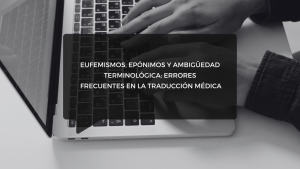In the ever-evolving landscape of the language industry, associations play a pivotal role in fostering connections, sharing knowledge, and advancing professional standards. These associations serve as invaluable hubs for translators, interpreters, localization experts, and language professionals alike, as well as for language service providers and translation/localization buyers and decision makers. Let’s delve into the significance of these organizations and highlight some of the key players in the field.
Associations such as Tremédica, Asetrad, GALA, ALC, ELIA, AMTA, ATC, ATA, Women in Localization, Juntos, TINA, among others, as well as local boards of professional translations serve as pillars of support for language professionals worldwide. They provide a platform for networking, collaboration, and professional development, nurturing a sense of community within the industry.
One of the primary functions of these associations is to facilitate networking opportunities. By bringing together professionals from diverse backgrounds and specializations, they create spaces for collaboration and knowledge exchange. Whether through conferences, webinars, or local meetups, members can connect with peers, share insights, and forge valuable partnerships.
Moreover, associations serve as vital sources of information and resources. Through newsletters, publications, and online platforms, they keep members updated on industry trends, technological advancements, and best practices. This access to relevant information empowers professionals to stay ahead of the curve and adapt to the changing landscape of the language industry.
In addition to networking and knowledge-sharing, associations play a crucial role in providing training and professional development opportunities. From workshops and seminars to certification programs and mentorship initiatives, these organizations offer a variety of resources to help members enhance their skills and expand their expertise.
Furthermore, associations often serve as advocates for the profession, working to establish and uphold standards of excellence and ethics. They collaborate with regulatory bodies, government agencies, and industry stakeholders to ensure the recognition and protection of language professionals’ rights and responsibilities.
In today’s fast-paced world, characterized by technological advancements and global connectivity, human connections remain a cornerstone of the language industry. Associations serve as guardians of these connections, preserving the human element amidst the digital revolution. They foster a sense of belonging and camaraderie, uniting professionals in their shared passion for language and communication.
In conclusion, associations play a multifaceted role in the language industry, serving as hubs of connectivity, knowledge, and support. Through networking, information-sharing, training, and advocacy, these organizations empower language professionals to thrive in a rapidly changing world. Become a member of the one most relevant for your business and contribute to them as much as possible, no doubts, there will be rewards.



